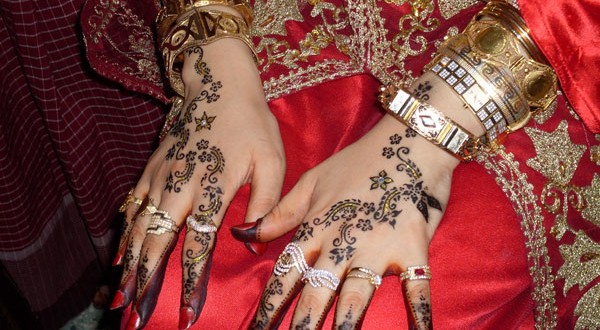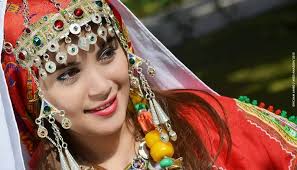# The traditions of Tunisian marriage #

As is the tradition in Tunisia, the Tunisian wedding takes place for a week. During this lapse of time, the future wife is at the center of all attention. In the past, when her wedding approached, the bride had to wear no less than seven traditional ceremonial dresses, embroidered or jeweled dresses. Nowadays, the Tunisian marriage tends to modernize while remaining rather conservative.
The different stages of a traditional Tunisian wedding
On the first day of a Tunisian wedding also called "saboun", the women of the family must prepare the trousseau of the bride by ironing the linen of the house or take care of decoration.
The second day is dedicated to "hazzén el farch". The women will now unpack all the bride's trousseau in front of the whole family and then help with the storage.
The next day, the whole day is dedicated to laarousa (the fiancée), it is the day of the "hammam". The mother, the sisters and the friends of the future bride form a musical procession with darbuka to go to a hammam. During the hammam, all women take care of the laaroussa by performing for example a scrub kessa glove, or a mask with clay. Everything is done so that the bride comes out of the hammam with a skin of a softness and radiant beauty for her next marital union.
On the fourth day, it's the "henna" ceremony. In the Tunisian tradition, it is said that henna can bring luck and happiness to the bride in her new life as a couple. It is the nekacha who will have the task of sublimating the parts of the body of the bride with a paste of henna.
Then comes the "harkous" ceremony on the fifth day of the Tunisian wedding. In the same way that the day before, the nekacha will apply another layer of henna on the hands and feet of the Tunisian bride by making a tattoo and a drawing. In Tunisia, the Maghreb bride must undergo a session of complete hair removal to sugar to have a satin skin. For this, a white stone (barouk) coupled with rose water is applied to the body to calm the skin pain of the wife.
On the sixth day, here is the bride finally ready for the "outéya" also called "outia", a traditional festival for the Tunisian wedding. Now that the Muslim bride is all beautiful and sublime, she can stand in front of all her guests. The bride and her guests are dressed in oriental and traditional dresses. According to the region of Tunisia where the bride is from, it can wear up to 4 traditional dresses (caftan, kessoua, tabdila) during this evening. As is the Tunisian custom, men are formally forbidden during this parade. This ceremony is also the opportunity for the Arab woman to pose for beautiful pictures with her oriental photographer. For his part, the Tunisian groom also enjoys a party between men. This can be considered in Europe as a bachelor party.
For the seventh and last day, here is the "dokhla". This is the big day for both lovers. The couple get together to start the festivities with family, friends and guests to celebrate the Tunisian wedding. The fiance has the opportunity to wear a costume or jebba which is the traditional Tunisian costume made with a noble fabric like silk. As for the bride, she wears a Tunisian dress that differs according to the region. As a rule, women choose the Kissoua white (Kesswa / Kessoua) composed of a blouza and a satin fouta beautifully embroidered and sequined. The tradition in Tunisia wishes that the Tunisian future married are seated when the ceremony begins, in a throne covered with silver or white satin. Finally, the bridal bouquet is offered by the husband to his bride for the sign of fertility.

The conditions to respect for a Tunisian wedding
To formalize a Tunisian marriage, the man must obligatorily be of Muslim religion unlike the woman. The formalization of the Tunisian married couple must be done at the mosque or at the parents of the young woman, with the consent of an imam who will give his blessing to the union. It is a man of the bride's family who gives the bride to her new husband.
.jpg)